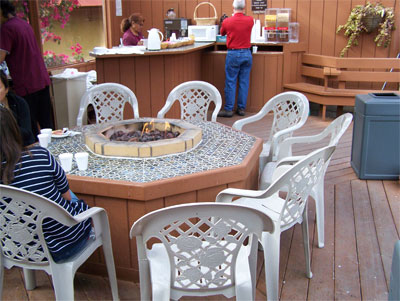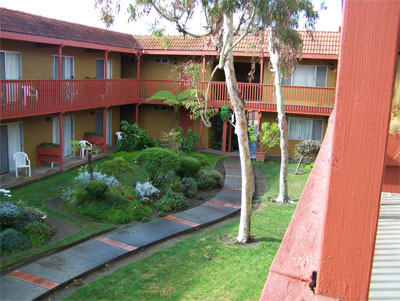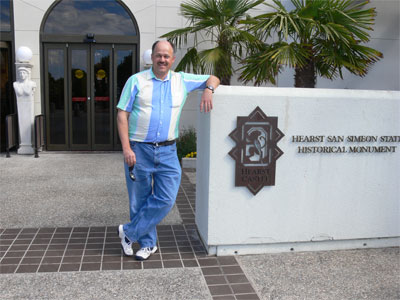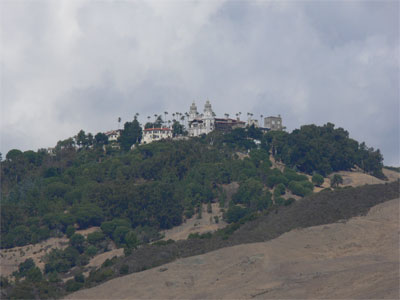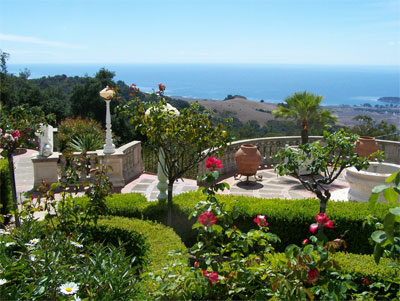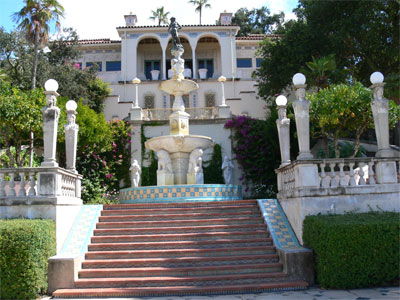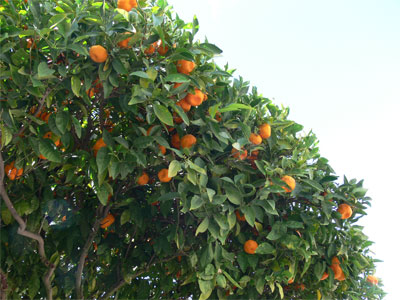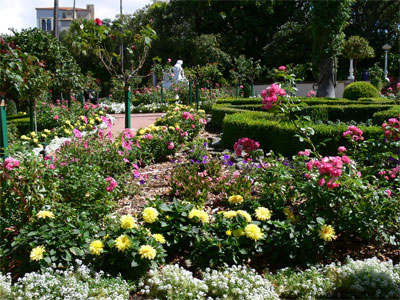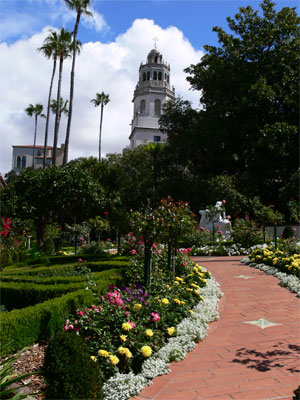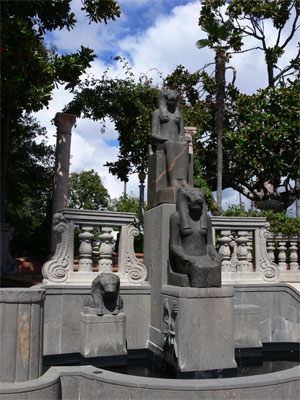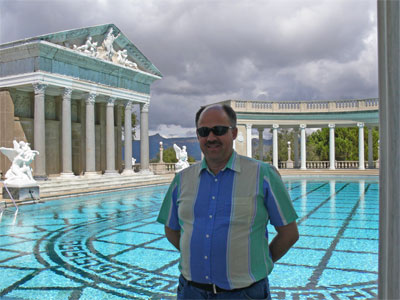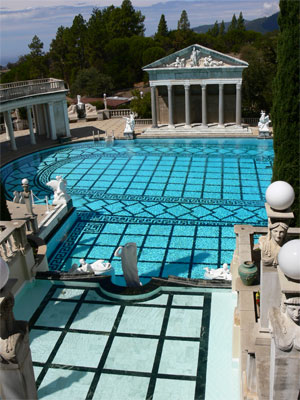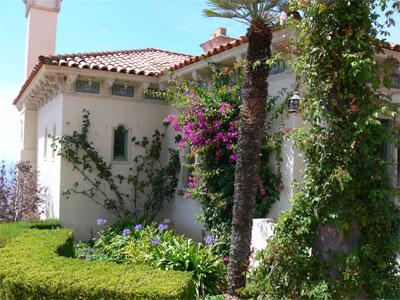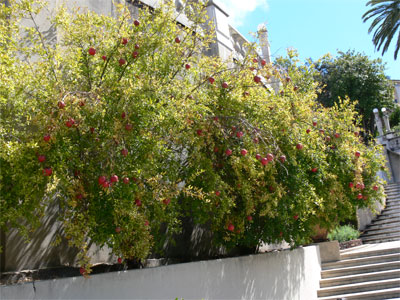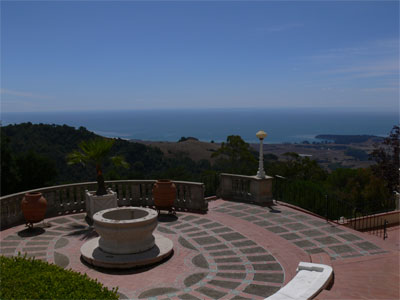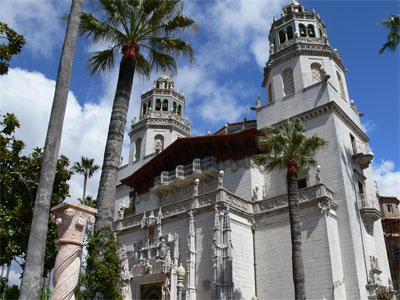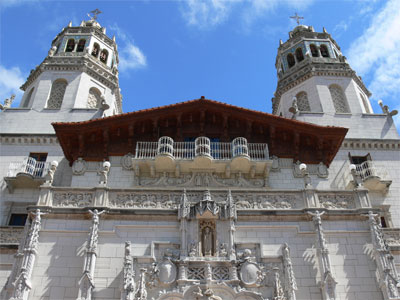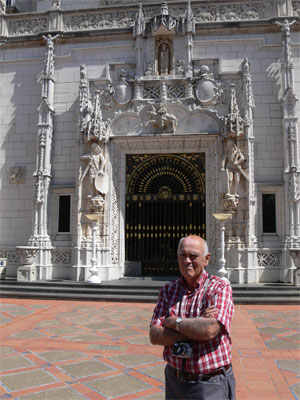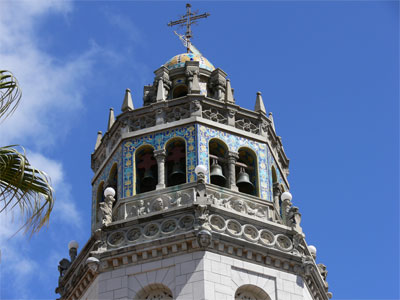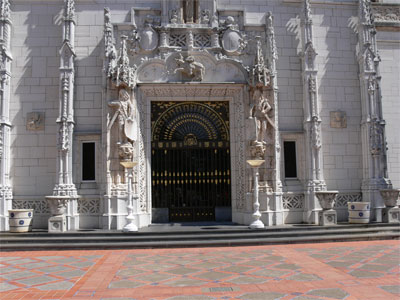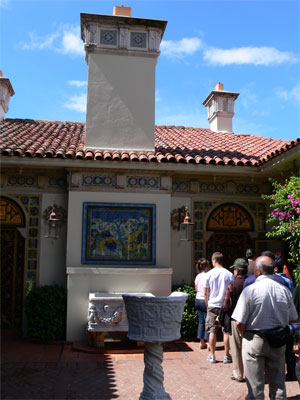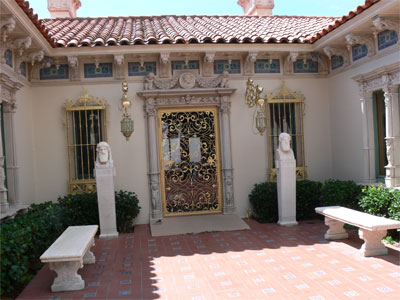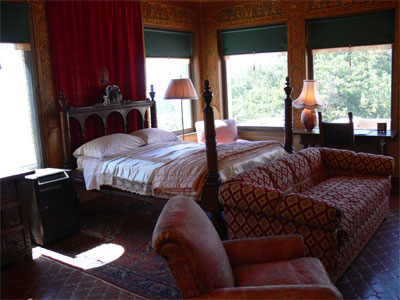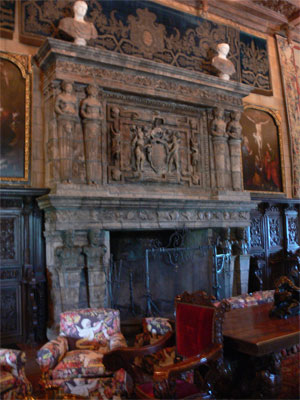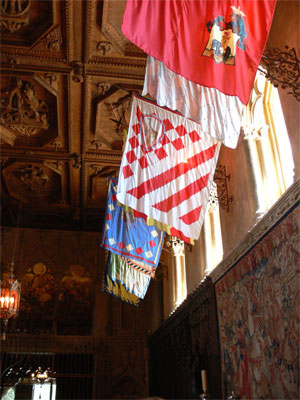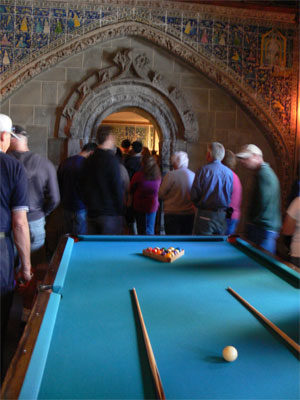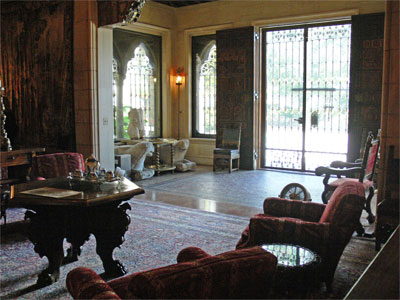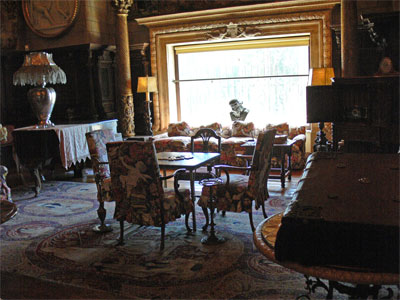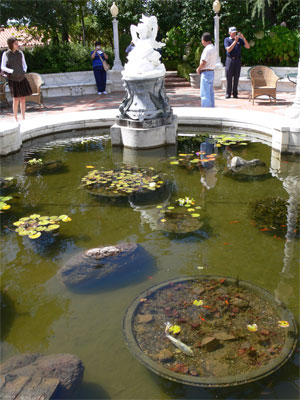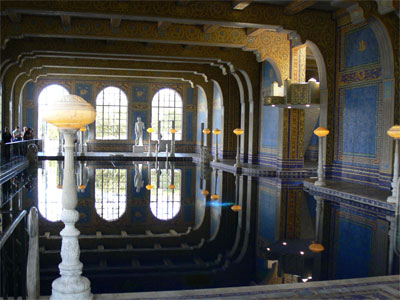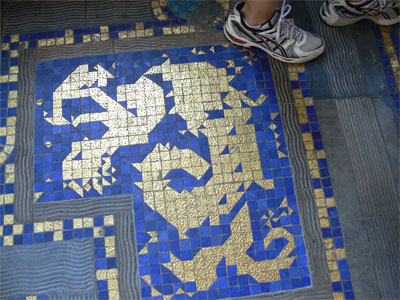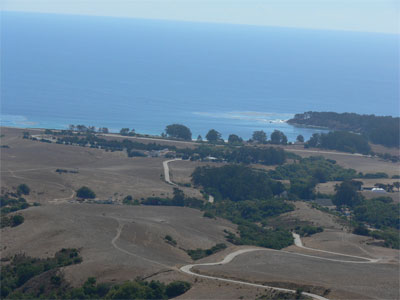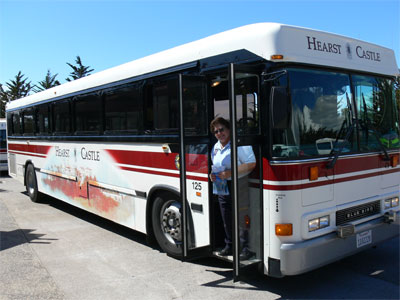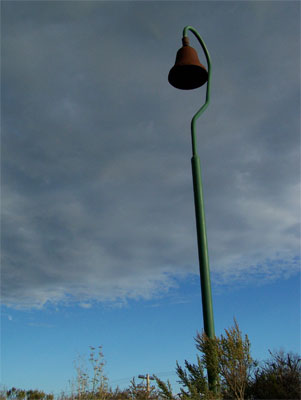
John A. Travels to California
Day 15 – Saturday, September 22, 2007 – Hearst Castle |
| Day 01- Leave Ontario |
| Day 02 - Chicago |
| Day 03 - Mt. Rushmore |
| Day 04 - Yellowstone |
| Day 05 - Yellowstone |
| Day 06 - Up to Alberta |
| Day 07 - Banff & Lake Louise |
| Day 08 - Whistler, BC |
| Day 09 - Vancouver & Seattle |
| Day 10 - Mt. St. Helens |
| Day 11 - Coastal Hwy 1 |
| Day 12 - San Fransico |
| Day 13 - Yosemite Park |
| Day 14 - Giant Redwoods |
| Day 15 - Hearst Castle |
| Day 16 - Los Angelos & COD |
| Day 17 - Hollywood |
| Day 18 - Thru the Bible & Vegas |
| Day 19 - Death Valley |
| Day 20 - Hoover Dam & Skywalk |
| Day 21 - Caverns & Grand Canyon |
| Day 22 - Grand Canyon - Hike |
| Day 23 - Grand C. - Hermit's Rest |
| Day 24 - Petrified Forest |
| Day 25 - Meteor Crater |
| Day 26 - Carlsbad Caverns |
| Day 27 - Dallas, Texas |
| Day 28 - Mississippi River |
| Day 29 - St. Loius |
| Day 30 - Detroit |
| Day 31 - Home to Woodstock |
![]() NOTE:
NOTE:
All images can be enlarged
It was past 7 a.m. when I awoke in the huge king-sized bed. I must have been tired, as this was the latest I had ever slept in during our trip. My headache was gone, and I was ready for more adventure! Our hotel had a continental breakfast out on a patio. Each table featured an open fire pit. We enjoyed watching the birds. Unlike most continental breakfasts where you serve yourself, this hotel, the Quality Inn, San Simeon, had a middle-aged Spanish lady who prepared everything for the guests. The courtyard nearby was also beautiful, and I was loathe to leave it all to get back on the road again. We headed back some two miles north to Hearst Castle. Ronald said that the huge visitor centre was completely new from what it had been when he visited years ago. Our first task was to figure out which of the five possible guided tours we would like to go on. We chose Tour Number One, which started with an IMAX film presentation on the construction of the castle, and the life of William Randolph Hearst. The film was produced by National Geographic, and, as all IMAX films are, it was spectacular. The thing that stood out in the film was his mother’s influence. When he was ten years old, his father had already made his fortune in mining. His mother took him on a year-long vacation through all of Europe. They visited the museums, and took in all of the art of Europe. The art greatly influenced the young lad, and he would later incorporate it into his own castle. Another interesting story is how he greatly loved the hillside on his father’s ranch where the family often picnicked. He chose this location to build the castle. At one point, he asked his mother if he could some day build a house there, but she said no. She knew how he tended to get carried away. How true, as the castle now testifies! We went immediately from the film to our tour bus for the five-mile trip up the hill to the castle. The one thing I found a bit strange was the fact that there were no self-guided tours available. Security was extremely tight, and no time was allowed for loitering. However, the abundance of the expensive artwork and statuary are probably the reason for this. It also allows them to charge $25 for the tour! An audio presentation on the PA system commenced the tour the moment the bus was put into gear. The castle is situated on a 165,000 acre ranch, which is still operated by the Hearst Corporation. The main construction of the castle took 15 years to complete, although construction was ongoing right up until just before the death of Mr. Hearst. In fact, the little town of San Simeon where we stayed the night before appears to exist just to support this facility. It was originally built to house the construction workers and the ranch workers, but now has close to 30 hotels for the tourists who come each day. While we only saw cows and zebras, apparently the ranch still hosts many wild animals imported by Mr. Hearst. It has its own water system, and up until recently, its own generating system. It is like a small, independent Spanish village on the crest of the hill. We met our tour guides at the top who then led as for the next 1½ hour through the various buildings. Security was so tight that they even had one of the guides walk behind our group to make sure there were no stragglers. At one point, I stepped half-way off of the carpet. A security guard leaned out of a door and said, “Excuse me sir.” I took his photo just for fun! Flash photography was not allowed anywhere in the castle. This was most unfortunate, as about 20 of my shots had to be deleted due to lack of exposure. We started with the guest rooms, which were surrounded by fruit trees and flower gardens which overlooked the valley below. All the walkways were made of inlaid marble. Everywhere you turned were statues and other artwork. Next was the reflecting pool, called Neptune Pool, which was on an outdoor terrace. It seemed to have been designed after a Greek public bath. There were columns and statues and fountains all over the place. The museum staff kept everything in tip top condition, and I was tempted to go in for a dip. Next, we went up the stairs and through some of the bedrooms. While they looked very nice, they reminded me of a museum. Now it was a time to go up to the front to the main residence, which looked more like a Spanish cathedral than a house. It had two towers with bells in them, and an extremely ornate front door completely covered with carvings. These two towers are the most distinguishing feature that you see from below. The close-up look revealed even more detailed and interesting ornamentation. We went around the corner and into a side door. This was apparently his secret door, although it was simply carved like the rest of the wall on the other side, and not really that secret. Next we went into the dining room, which looked like it was set up as a mediaeval court. The table had about 30 chairs on each side. Behind the centre chair was a huge sceptre, which apparently symbolized his power. The interesting thing was that the place settings were not hugely expensive, but more fitting for his ranch, which is what he called the castle. They even had ketchup and mustard bottles on the table along with the silverware! It was an interesting mix of contemporary and formal. The upper part of the room had colourful flags with Spanish patterns. This had the effect of making you look up, giving the impression that the room was higher than it was wide. However, this was an optical allusion, as it was actually wider than it was high. He also opted not to install stained glass, but kept the windows clear, as the blue sky was more beautiful to him. What I found most amazing about this dining room was the wood ceiling. Looking down on you from each section were life-sized figures carved in relief. There was a lot of religious artwork throughout, but this was the best example, in my opinion. Next was the pool room, which had two pool tables. Then we went down the hall and past a piano-type of machine that rang the cathedral bells. There was also a tennis court. The final stop was the swimming pool. This was where we actually walked on gold, as the tiles had inlaid gold leaf in them. There were amazing colours of blue and gold images both underwater and on the ceiling. The diving tower was about ten feet above the water, and the water itself was ten feet deep. There was also a more shallow pool for those who were not good swimmers. All of a sudden, I realized that this was the end of the tour, and we were on our bus once more! Down the mountain we went, enjoying another audio tour over the PA system. On the way out of the grounds, we passed the walkway, which, during Randoph Hearst’s time, was covered in grape arbours for several miles. There were also old log buildings with an open design to shelter the wild animals during extreme weather. At one time, he had the largest private zoo in the world. Back down at the visitor centre, we decided to have lunch, and then go to the museum. It turned out that this museum filled in a lot of the details about the life of William Randolph Hearst. What impressed me most about the man was his enormous energy and drive. During his heyday, he ran 96 different businesses all at the same time from his castle. Just one of these businesses would more than keep the average man busy for a lifetime. Starting with one newspaper in 1887, W. R. Hearst expanded his holdings until he commanded the country’s largest publishing operation. By 1935, the Hearst Empire encompassed 26 daily newspapers, a features syndicate, 13 magazines, and newsreel and motion picture production companies. This empire afforded Hearst a forum to promote his beliefs, crusade for reform, and influence the country’s policies. I particularly liked some of the reforms which he was able to bring about, resulting in greatly improved social justice in his day. Another thing that impressed me was how much he enjoyed sharing with those around him. For about six years, he would take a 1½ month vacation with a dozen of his friends, taking them on an all-expense- paid tour of Europe. He was also the mayor of New York, and a senator for two terms. The only thing he aspired to but did not achieve was becoming president of the United States. Another intriguing thing was the lady, Miss Julia Morgan, who became his architect. Construction began in 1919, and continued until Mr. Hearst left due to poor health in 1947. She was not only an incredibly skilled architect, but a civil engineer, and a great foreperson. They said her main strength was the ability to cope with his changeable mind. Very often, he would build something, and then tear it down to build it again in a more grand scale, and then tear it down again to build it a third time on an even larger scale! Not only could she cope with this, but the design of the castle became her dream, as well as his. There was a time in 1937 when he nearly went bankrupt. Apparently, he refused to fire his workers during the great depression, and continued to pay them very well. They were all extremely loyal to him, and called him The Chief. He hired talented people, paid large salaries, and expected hard work and dedication. Rather than give orders, he gave them suggestions, and they all supported him wholeheartedly. During the Depression, he was forced to sell some of his businesses and some art, but was able to hang on to his newspapers. I’m not sure what impressed me more, the statues and grandeur of the castle, or Mr. Hearst’s personality. By the time we finished, it was about 3:30. We decided to head towards Los Angeles, which was about 300 miles away. Along the way, we saw bells on poles every mile. I guess this was some type of old warning system. We also saw oil platforms far out to sea. On the way, we stopped in Ventura for supper, and Ronald phoned his friend John Holden. Unfortunately, the number in the phone book did not turn out to be that of his friend, so we had to carry on. We had called ahead, and booked the hotel in Glendora, which was near the Church of the Open Door. Although it was getting dark, we decided to push on so that we would not have to rush on Sunday morning. It had been our intention to carry on down Highway Number One, but when I realized it was dark, we decided jump back onto the Superhighway 101. It made no sense to take the scenic route when you couldn’t see anything! We arrived at about 9 p.m. at the Best Western on Old Route 66. It was a brand new hotel, with an automatic piano player in the foyer. As soon as we booked in, we jumped into the pool. Rather, I jumped in the pool, and Ronald jumped into the hot tub. It was not long before I joined him in the hot tub, as even in L. A. it was a bit chilly. We went to bed feeling relaxed. We traveled 436 kilometres today, and were now at the southernmost point of our journey. |
